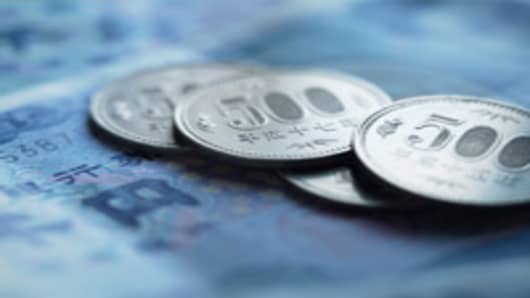The G7’s agreement on joint action to push the yen lower has, so far, had the desired effect, reversing much of this week’s gain for the yen and boosting equities in Tokyo.
The question now is whether the G7 treasuries and central banks will be able maintain the momentum and what implications the intervention will have for asset classes around the world.
The last thing the G7 wants is to let the market know what it is hoping to achieve, aiming instead keep investors second guessing its intentions until it has achieved the desired outcome.
"The first aim is to boost liquidity to shore up the economy and get the yen back up above 85 versus the dollar," said Seijiro Takeshita, a director at Japanese banking group Mizuho International. "The joint intervention is a completely different game than the Japanese acting alone and should scare off the short term players."
"When each market opens the G7 will intervene and push the yen lower. Coordinated action has a much better chance of success," said Paul Day, chief strategist at Market Securities.
David Bloom, the global head of foreign exchange strategy at HSBC, agreed the intervention will work today, but questions whether the fundamentals will support the trend.
"The fundamental backdrop for the yen is not bearish," he said. "Low global interest rates were already limiting outward investment, and now that bias will potentially be compounded by the prospect of at least some repatriation flows over time to aid in rebuilding."
Repatriation by Japanese firms have not yet happened and Bloom does not expect this to happen soon, given that the cash the Japanese insurers are sitting on allows them cover claims without bringing money home.
Overnight, the head of Japan’s Life Insurance Association told the Kyodo news agency that insurers do not need to repatriate funds.
Short-Term/Long-Term
Bloom questioned just how much help Japan can expect from the rest of the G7 given it was Japan that asked for help and said more big market moves can be expected over the coming days.
"The reality is that the yen remains sensitive to swings in risk appetite, and the Japanese equity market's sharp contraction in the wake of last week's earthquake and tsunami continue to represent a significant negative for risk appetite," he said.
"It could be that one objective of today's intervention is to buy time for the nuclear situation to stabilize, in hopes that development will relieve downward pressure on asset prices and upward pressure on the yen," he said.
With debt-to-GDP standing at more than 200 percent, some analysts wonder whether the Japanese economy can withstand the economic damage caused by the earthquake, tsunami and nuclear crisis.
While it is not possible to dismiss the Japanese debt situation it must also be noted that Japan is one of the world’s biggest creditors, Takeshita said.
"Corporations have a lot of cash on their balance sheets and as a major global largest creditor Japan has a significant buffer against its largely domestically held government debt," he said.
Those who think this intervention will work over the long-term should look at the example of the Swiss Franc, according to Bloom.
"The Swiss intervened and managed to weaken the franc in the short term; when they pulled back from intervention they got slapped," he said.
"The problem with intervention is that it creates a non-equilibrium price," he added. "You either defend that non-equilibrium price indefinitely or get slapped back towards the equilibrium price."
"With the yen you go up the stairs and come back down in the elevator very quickly."
The dollar was up over 3 percent against the yen on the joint intervention.





